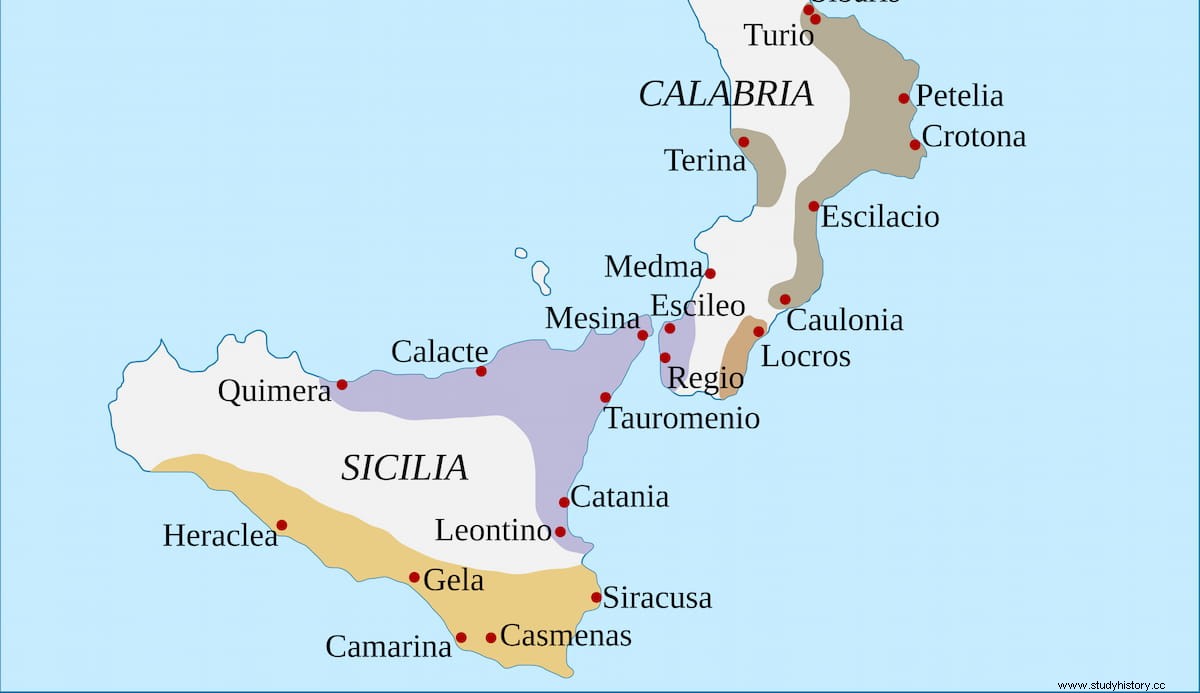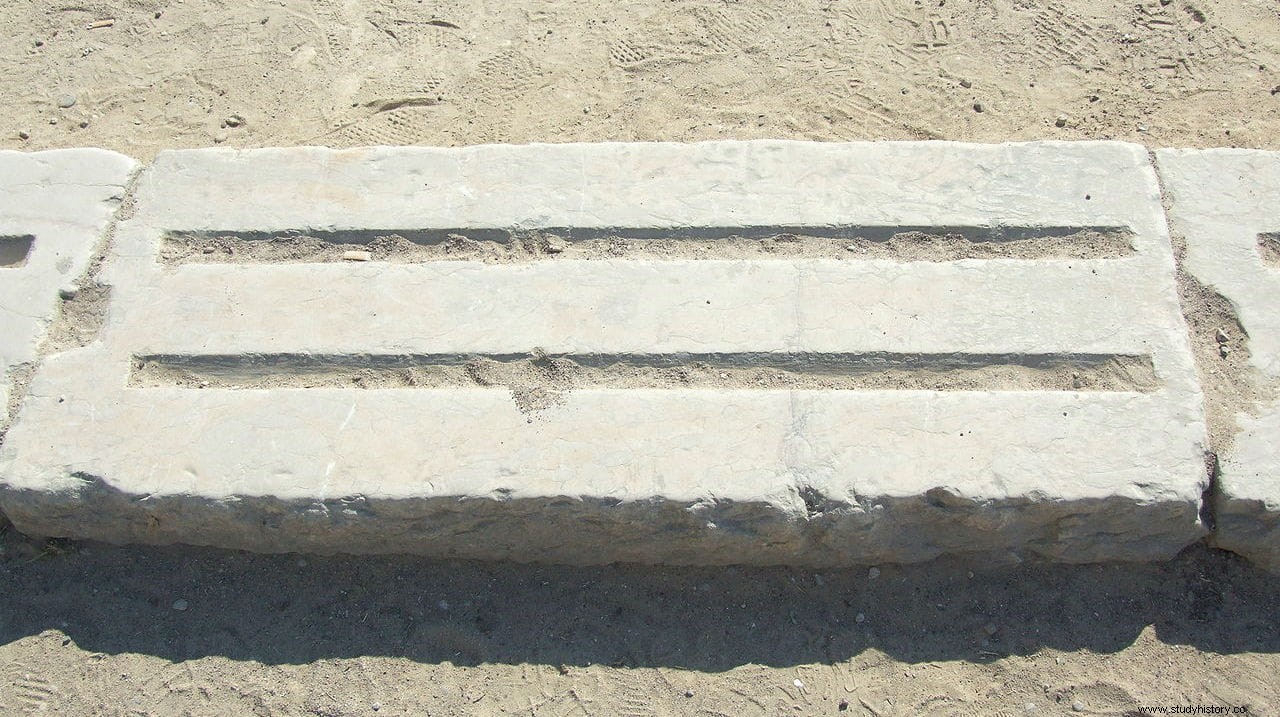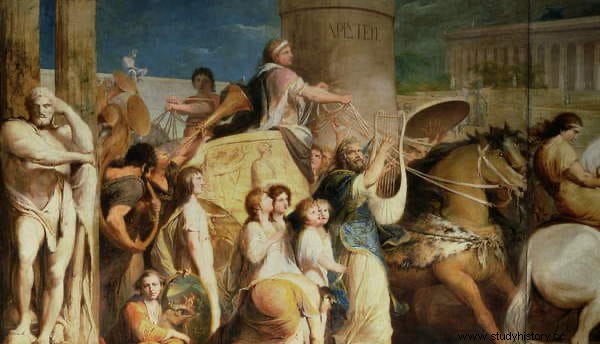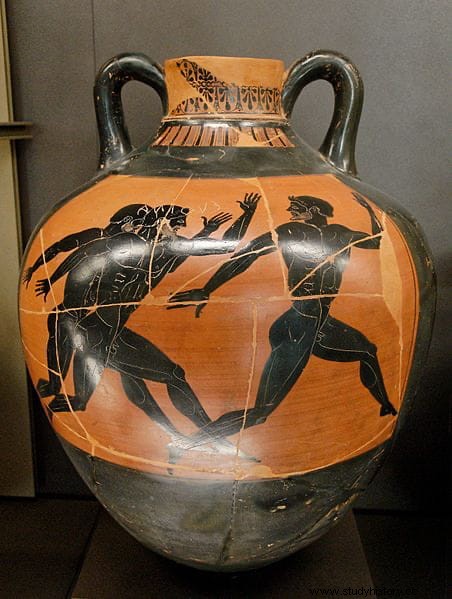In today's football, but also in other sports, we are used to seeing how players constantly change teams, mainly due to economic interests. Sometimes they even go to the rival team or the eternal enemy . Well, the first of them all to be documented was a Greek athlete from the 5th century BC.
His name was Astilo and he was born in Crotona, a Greek colony (founded by Achaeans from the city of Ripes around 709 BC) in the south of the Italian peninsula, located on the east coast of the Brucian peninsula, next to the mouth of the Aesaros River.

The city was famous for Pythagoras having established his school there around 540 BC. But also for being the place of origin of winning athletes in the Olympic Games, such as Milo de Crotona, a wrestler who won six consecutive Olympics.
Astilo also represented his city at the Games held at Olympia every four years. From the list of Olympic winners we know that he won three times in a row. The first time in the 73rd Olympiad (488 BC), then in the 74th (484 BC) and in the 75th (480 BC). And not in just any discipline, but in the most important of the Games, the stadion . In fact, in the first 14 Olympiads (between 776 and 724 BC) there were no more competitions than this.

The stadium It was a foot race that took its name from the place where it was held, the stadium (stadion in Greek, then stadium in Latin), which in turn came from the unit of length equivalent to 600 feet (of Heracles). It was held both in the Olympic Games and in the rest of the Panhellenic Games, and consisted of a speed competition over a distance that coincided with the length of the stadium track, which varied slightly from one place to another.
In the case of Olympia the distance was 192 meters (in Delphi it was 178 meters, for example). It was, according to Stephen Gaylord Miller, the equivalent of the current 200-meter race. The athlete who won in the stadion gave name to the 4 years of the Olympiad (the Olympiad was the period of 4 years between some Games and others).

Crotona was the city that dominated the race in the 6th and 5th centuries BC. In the 26 Olympiads between 588 and 488 B.C. there were 11 winners of Crotona, something that continues to amaze scholars of athletics in Antiquity even today. In comparison, in that same period the following cities with the highest number of wins in the stadion They were Elis and Corcyra, with 2 each. An overwhelming difference. According to Strabo:
Some specialists believe that the success of Crotona could have been influenced by Pythagorean nutritional theories (remember that the city was the seat of the Pythagorean school), if there were any, along with strict sports training.

The Games promoted, in fact, the competition between cities, proclaiming both at the beginning of each event the affiliation of each athlete to the city they represented, and then the city of the winner at the end.
That is why some cities like Syracuse (in Sicily) tried to attract athletes from other city-states to represent them and thus achieve victory and the consequent prestige that they did not obtain by themselves. There are several documented cases, but as we said, one of the first, and probably the precedent of all, was that of Astilo.

Astilus of Crotona, which he had won in 488 B.C. and 484 BC. the stadium (and also the diaulo , the race that consisted of going around the stadium 2 times, equivalent to the current 400 meters) won again in 480 BC. in both tests. But this time, when the judges proclaimed the winner, they shouted Astilo de Siracusa , instead of mentioning his hometown of Crotona. What had happened?
Quite simply, the tyrant of Syracuse, Hieron, had offered Astilus certain privileges and rewards if he competed on behalf of his city. The Crotonas didn't take it very well.
The reaction of his fellow citizens was perhaps a bit exaggerated, but it shows how seriously they took the competition. Not only did they destroy the statue of Astilus that Pythagoras of Rhegium had made and that stood in a prominent place in the city, next to the temple of Hera, accompanying those of other victors, but they also turned his house into a prison. /p>

By then Astilo had long lived in Syracuse, enjoying the life promised by Hieron.
However, there are historians who maintain that Astilo was not a change of team but that he would have voluntarily emigrated to Syracuse because he was in disagreement with the Pythagorean oligarchy that ruled in Crotona. In this regard says H.W. Pleket:
Pleket believes that the reason for Astilo's defection was none other than economic (anyone could cite three or four similar cases in current sport). Crotona would not have been able to pay him what Syracuse was paying him, or what Astilus would have asked for.
